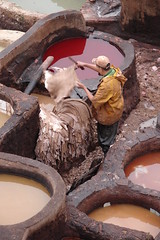This is the abstract I submitted to the University of Victoria Department of Geography.
Exploring the Effect of Multiple Stressors on the Restructuring of the Mexican Leather and Footwear Industries
Traditional theories of industrial restructuring assign the most explanatory weight of the structural change phenomenon to increasing pressures via globalization and falling trade barriers. In this talk, I will describe a new model of thinking about industrial restructuring that includes multiple stressors. The research focuses on three main drivers of structural change: market pressures, environmental regulation and changes in land use and land pricing, using two case studies of leather and footwear industrial clusters in Mexico, located in the cities of León and Guadalajara. Evidence of multiple drivers of structural change is found. Furthermore, responses to restructuring drivers in León and Guadalajara are found to be substantially different. Firms in the leather and footwear cluster in León have implemented countervailing strategies such as price competition, government lobbying, and more recently, investment in socio-economic research (competitiveness) projects. However, firms in the leather and footwear cluster in Guadalajara focused on a specific, high-end target market.
At the larger, urban scale, footwear and its allied industries in the city of León resisted change and have tried to remain in operation while the city of Guadalajara has focused on a diversification strategy, attracting new (arguably more technically advanced) industries.
Empirically, this project applies a firm demographics approach to the study of industrial clusters under multiple stressors. This approach has not been previously used on Mexican data. Theoretically, it demonstrates that future analyses of industrial complexes’ structural change can be strengthened through the use of an integrated assessment framework investigating the effect of multiple stressors (market forces, land pricing, technical change, environmental regulations, and consumer preferences) on industrial restructuring.


0 Responses
Stay in touch with the conversation, subscribe to the RSS feed for comments on this post.